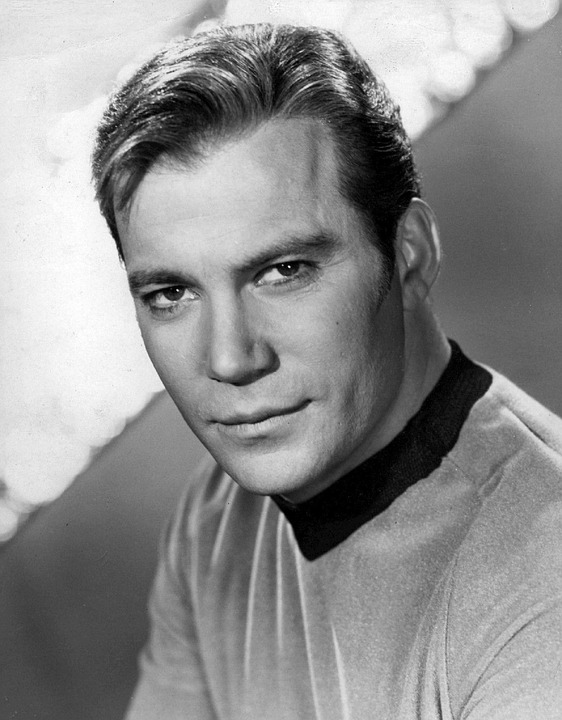

Blog
Biometria no cinema!
Almas Team

Já na década de 1950, as pessoas sonhavam com tecnologia que pudesse usar impressões digitais, sua voz ou olhos para controlar sistemas de segurança
The Sundance Film Festival starts on the 24th January and we thought that it might be fun to take a look at the history of biometrics in the movies and TV. As far back as the 1950’s, people were dreaming of technology that could use fingerprints, your voice or eyes to control security systems. Back then it was a dream, but now it is a reality. There are many amazing science-fiction films and TV shows that feature biometrics, let’s take a look at some of them.

Star Trek (1966) was the earliest TV series to feature biometrics. Voice ID was used to talk to the computer on the enterprise, and it could distinguish between conversations and voice commands. In the Wrath of Khan, Kirk uses a retina scan to access Project Genesis data. Crew members all used a Tricoder – a handheld device that can scan for lifeforms and record technical data – the medical version used by Doctor Macoy could diagnose diseases and record body statistics. More recently, facial scans were used to enter the archives in Star Trek into Darkness (2016). Star Trek was a pioneer in envisioning technology that has become now become commonplace in our daily lives.
One of the most creepy biometric applications has to be HAL9000, the computer on the ship Spacecraft Discovery One in 2001: A Space Odyssey (1968). HAL is able to control the ship by responding to vocal commands and facial recognition is also built in. Who can forget those words, “I’m sorry Dave, I’m afraid I can’t do that”.

Retina scans featured heavily in the seminal Blade Runner (1982). The Voight-Kampff machine was a polygraph that measured the involuntary dilations of a subject’s iris to identify empathy and determine if they were human. This test has actually been used in the real world for online dating and in political elections (presumably to test if politicians are human).
Robocop (1987) used facial recognition to identify the villain, Boddicker. Facial recognition was also featured in Ex Machina (2015) by the humanoid robot, Ava. This face scanning technology has since been transformed into wearable tech applications for today’s law enforcement.
Demolition Man (1993) took a humorous take on the use of biometrics, where the verbal morality statute monitor was able to identify a person if they swore, and then give them a penalty ticket! Lights and cars in the movie can also be activated by using your voice. Voice ID was also used in District 9 (2009) and Dredd (2012). Dredd also featured DNA ID in the form of a weapon called the ‘Lawgiver’ which is set to explode if an unauthorised person tries to use it. Fast forward to today and bank cards that only work if verified by fingerprint, thankfully they don’t blow up if used by unauthorised person, but who knows, it may prove a deterrent to pick pockets!

In the colourful future portrayed in The Fifth Element (1997), police vehicles are equipped with facial recognition software. Law enforcement uses scanners to detect different species. Much the same type of tech is used in the Men in Black series.

In the all-time classic Alien (1979), breath identification is used to gain security access. This has yet to become a mainstream form of biometric identification, although research has been ongoing into the use of metaolities (a substance formed in or necessary for metabolism) for medical diagnosis.
In Starship Troopers (1997), brain scans are used. Some people have psychic abilities such as reading minds and mind control. The brain bugs, could read minds and steal knowledge and memories from other beings.

A world fairly reminiscent of modern China, the citywide optical recognition system featured in Minority Report (2002), identifies, track and transmits movement data to the police. Advertising is customised based on your identity. To avoid detection, Tom Cruise’s character, Anderton gets an eye implant then carries his original eyeballs around in a plastic bag! James Bond also got in on the eyeball-act in Never Say Never Again (1983).
In the Terminator series of films (1984 onwards), retina scans, facial recognition and DNA identification are used. The T-X Terminator has a built-in visual display that overlays computer information about what it sees. This is what enables her to identify a person using their blood! Skynet probes rely on facial recognition.
Palm and handprint recognition featured in the film Kingsman (2015) in the form of access control and weapons’ activation. It also featured in many other films that year including Antman, Jupiter Rising, Jurassic World and Mission Impossible 5.
The most popular form of biometrics featured in movies and TV is facial recognition, closely followed by voice ID, retina scans and DNA ID. It’s interesting to look back on over 50 years of film and see that many of the ideas that people had have since become reality.
It’s clear that science fiction quickly become fact; indeed the imagination and creativity shown by writers may indeed be what inspires scientists to explore whether the vision can be made reality.
Where will biometric applications be applied? Will we see the development of species ID, breath printing or brain scans? Could we all be
using biometric identifiers to use high value goods such as cars, homes as well as mobiles and computers? Biometric solutions are no longer the future, they are becoming mainstream in every day life.
Have you assessed how such applications could bring your business cost savings and increased efficiency in 2019?
We promise you won’t need to carry any eyes around in bags, but as market leaders, innovators, manufacturers and installers of biometric control systems, Almas Industries are well placed to help businesses with biometric control and security. You can arrange your free, no obligation security survey by calling us on 0333 567 66 77. If you prefer, you can always send a confidential email via enquiries@almas-industries.com.
Compartilhar


